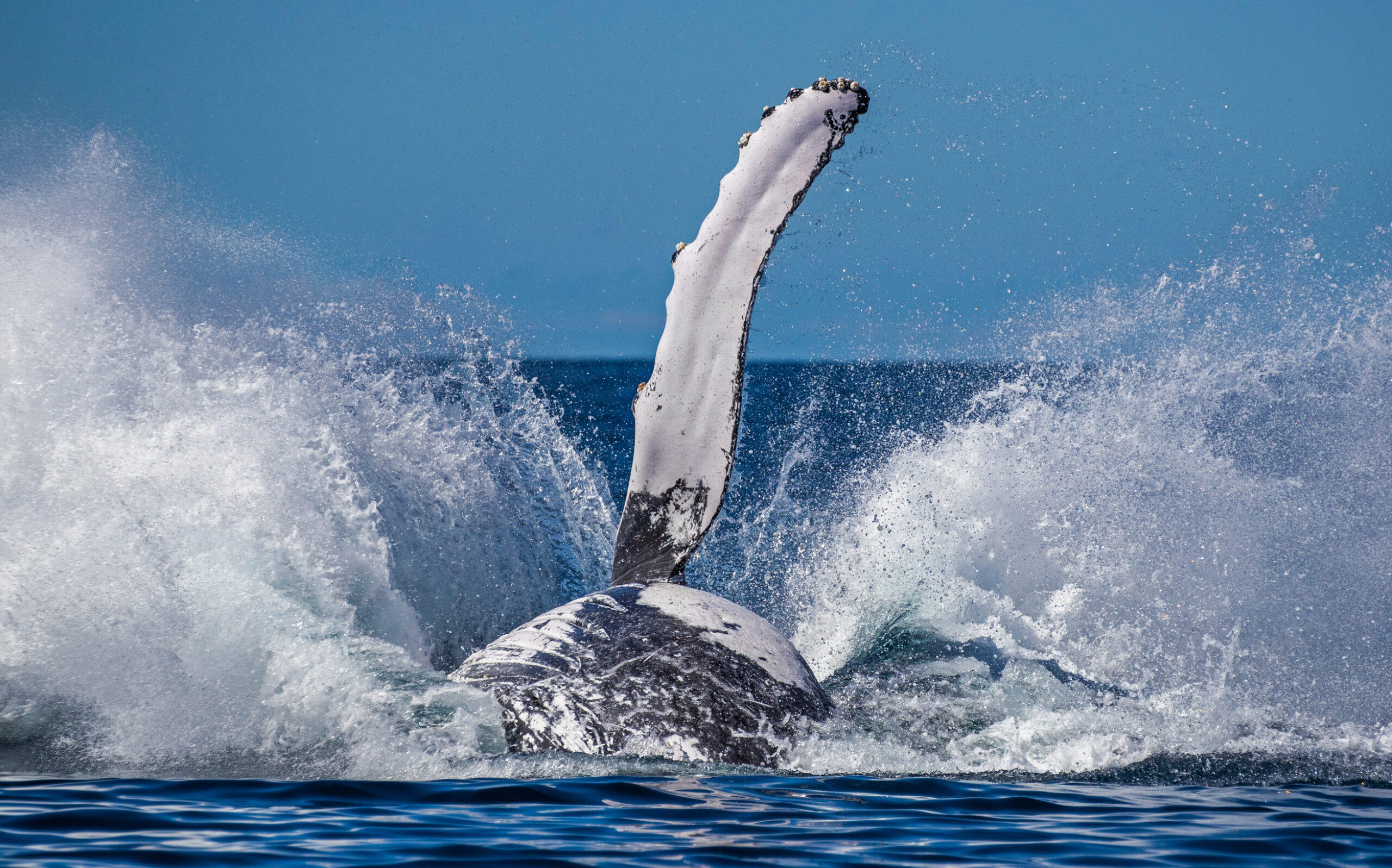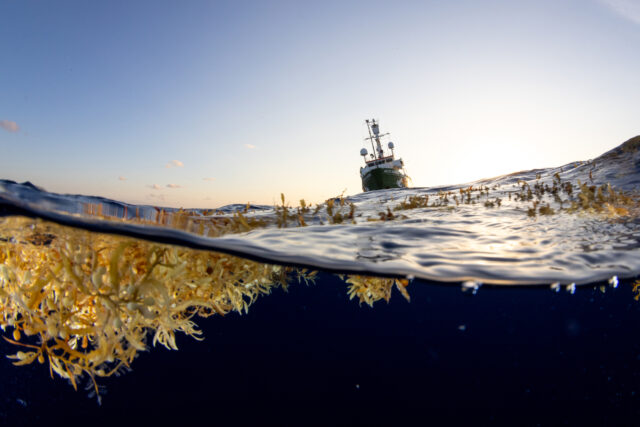
- Article
A landmark victory for our oceans: the Global Ocean Treaty comes to life
We did it! More than sixty governments have now ratified The treaty is officially known as the High Seas Treaty or Biodiversity Beyond National Jurisdiction (BBNJ) Agreement. To ratify a treaty means a state formally consents, through its recognised process, to be bound by its terms. the Global Ocean Treaty. This milestone means it will officially come into force in early 2026, and marks the most significant victory for ocean protection and restoration I have ever witnessed.
I’ve been campaigning for more than 15 years with colleagues at Greenpeace and our incredible supporters. Together with so many organisations and hundreds of thousands of people worldwide, we’ve worked tirelessly for this victory.
Campaigners, coastal communities, small-scale fishers, scientists, and ocean lovers everywhere can hold on to this moment as proof that when millions of voices demand change, we can achieve what once seemed like a distant dream.
Why does the Global Ocean Treaty matter?
Our oceans are in crisis. Less than 1% of the High Seas The High Seas are the huge areas of ocean beyond any country's national waters. are fully or highly protected, meaning they remain vulnerable to industrial fishing, oil drilling, and, maybe soon, even deep sea mining.
The Global Ocean Treaty has the power to change everything. For the first time, governments have a legal framework to create High Seas sanctuaries – vast protected areas outside of any country’s national waters, where fragile ecosystems can recover and thrive. If fully implemented, the Treaty could establish the largest network of ocean sanctuaries in history, covering over a third of our global oceans.
It’s incredible to think that half of all biodiversity on Earth lives in the ocean. The Earth is more blue than green, but so much of that life remains hidden beneath the waves.
Nudibranchs are my personal favourite. They’re fascinating, tiny, sea slugs that come in all kinds of dazzling colours and bizarre shapes. They have names like “blue dragons”, “sea angels”, “sea sheep” and there’s even one called the “Pikachu sea slug”, which my children love! They’re not just beautiful, their presence also indicates the health of the oceans.

We’re still only beginning to understand the deep ocean’s importance. Seamounts – underwater mountains scattered across the High Seas – may act as signposts for migratory birds, and the deep sea may even play a role in oxygen production.

High Seas sanctuaries aren’t just about allowing wildlife to recover, they’re crucial to helping us tackle the climate crisis, and for safeguarding food security for billions of people.
Decades in the making
The very first Greenpeace briefing on the need for an ocean treaty was written back in 2005. Since then, campaigners, scientists, Indigenous communities, and countless other organisations on every continent have worked so hard to build momentum.
Some of my most vivid memories of oceans campaigning come from time I’ve spent at sea. In 2014 I joined Greenpeace’s ship Esperanza on a trip to the Arctic to document how industrial fishing vessels were creeping further north as the ice retreated. I’ll never forget bouncing in a tiny rhib through huge swells to get a closer look at the catch of an fishing trawler. It was terrifying and exhilarating all at once.

On that journey we recorded polar bears, whales, walruses, and so many seabirds – but also devastating amounts of plastic pollution. Seeing both the beauty and the threats on that trip really fuelled my determination.
Over the years, millions of you have spoken up for ocean protection. You’ve signed petitions, marched in the streets, lobbied governments, and shared your love for the sea in ways that helped push world leaders towards agreement. To everyone who took action, however you did it: thank you. This win belongs to all of us.
A message to the UK government
Disappointingly, the UK is not among the first 60 countries to ratify the Treaty, despite being instrumental in its negotiation.
But earlier this month – after a sustained campaign – the government did finally introduce the Biodiversity Beyond National Jurisdiction Bill to Parliament. This is a vital first step towards ratification, but the process must now be completed quickly.
The treaty will enter into force on 17 January 2026 so the UK should finish passing it into law by the end of this year. The very first Ocean COP COP stands for Conference of the Parties. COPs are official meetings of the states that are part of a treaty. is on the horizon for next year. We want the UK to have a seat at the table, and to champion ambitious proposals for the first generation of High Seas sanctuaries, including the Sargasso Sea in the Atlantic.
The starting whistle, not the finish line
World governments have committed to protect at least 30% of the oceans by 2030. But to achieve it, they will need to put more than 12 million square kilometres of the High Seas – an area bigger than Canada – off limits to destructive activity every single year until then. It’s an enormous task, and the clock is ticking.
At the first Ocean COP, nations will finally be able to propose sanctuaries under the treaty. These must be grounded in science, shaped with the participation of Indigenous Peoples and local communities, and ensure full protection from harmful industries.
We know High Seas sanctuaries work
We don’t need to imagine what fully protected sanctuaries could achieve. The Galápagos Marine Reserve was established more than two decades ago and expanded in 2022. It’s an incredible living showcase of how ocean sanctuaries can help wildlife bounce back when given space and protection.
Sharks, turtles, and manta rays are returning and fish stocks have recovered, spilling over into surrounding waters and supporting local fishers. Coral reefs and ecosystems are thriving there – proof that when destructive industries are kept out, marine life can rebound quickly.
If one sanctuary around a single island chain can deliver such hope and abundance, imagine what a whole network of High Seas sanctuaries – across vast stretches of international waters – could do.
Together, we made this happen
Today, I feel an overwhelming sense of gratitude for our collective achievement. Our persistence and determination has paid off and we’ve secured the biggest ocean protection victory yet. Let’s celebrate, let’s defend it, and let’s keep going.
Let's keep changing the world
Here's three powerful ways ways to keep up the momentum for ocean protection.



